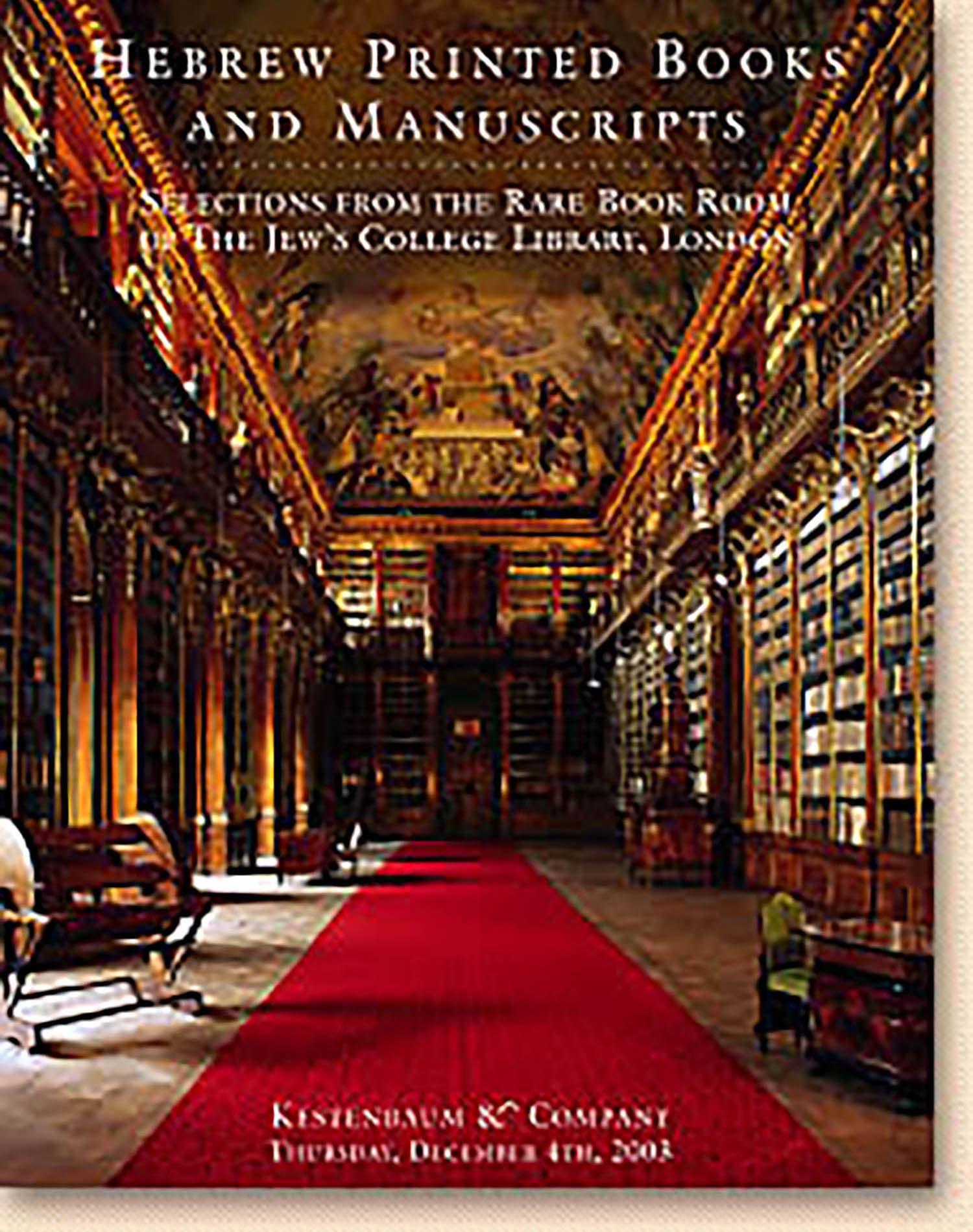Hagiz, Jacob ben Samuel

AUCTION 21 |
Thursday, December 04th,
2003 at 1:00
Kestenbaum & Company Holds Inaugural Auction of Hebrew Printed Books & Manuscripts at Their New Galleries
Lot 90
Hagiz, Jacob ben Samuel
Venice: Alvise Bragadin 1704
Est: $500 - $700
Both works were issued by R. Moses Hagiz (who was wont to sign himself MeNIaH, initials of Moses son of Jacob Hagiz). The two books are by his father Jacob, and maternal grandfather Moses Galante (MaGeN), respectively. Moses Hagiz is famous today for his dogged pursuit of crypto-Sabbatians (believers in the pseudo-Messiah Shabbetai Zevi). His father Jacob was head of the yeshivah in Jerusalem where Nathan of Gaza, prophet of Shabbetai Zevi, studied as a young man. In fact, in the prolonged absence of Nathan’s father, Elisha Aschkenazi, a fundraiser for Eretz Israel whose travels took him to faraway Morocco, young Nathan was raised in Jacob Hagiz’s home. When later Nathan became “prophet” of the nascent messianic movement, R. Jacob Hagiz repudiated his former student, to no avail. Hagiz’s son Moses inherited his father’s deep-seated animosity to all forms of Sabbatianism. Moses’ maternal grandfather, also a Jerusalemite, was a very different sort of individual, who for a time at least, was swept up by the hullaballoo of the Sabbatian movement. In early 1666, we find in Aleppo among the leading Sabbatian “prophets”. See A. Yaari, Sheluchei Eretz Yisrael (1977), pp. 290-291; Gershom Scholem, Sabbatai Sevi (Princeton, 1973), 201-202, 246-248; Elisheva Carlebach, The Pursuit of Heresy: Rabbi Moses Hagiz and the Sabbatian Controversies (New York,1990).
A facsimile of the title page of Korban Chagigah appears in Giora Pozielov, Hachmeihen shel Arba ‘Arei ha-Kodesh (Jerusalem, 2001), p.75
